
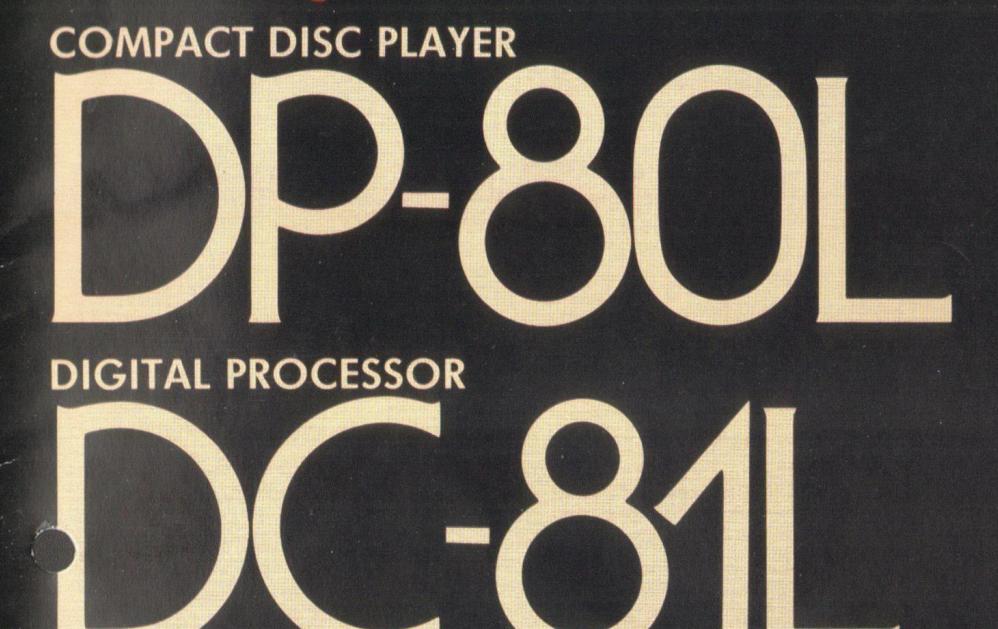


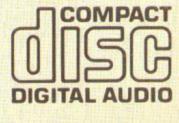

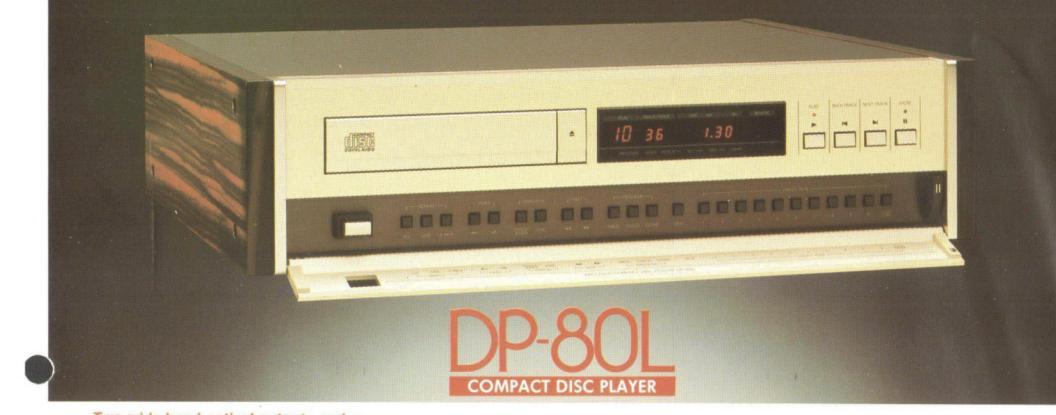
A 75-ohm coaxial concactor provide maximum versatility. Supplied optical fiber ensures ideal signal transmission characteristics he DC-81L offers two optical output connectors hich correspond to the EIAJ standard that is roposed by Accuphase and is known as the
Digital interface standard, in addition, a connector for $5-opm coaxial cable is also provided. The transmission rate of the wide-band optical obnection is a full 10 MBit/sec. When the supplied high- quality optical liber cable is used, this ensures transmission purity of the highest order, without any degradation of signal quality. As the player and processor units are electrically isolated from each other, any noise interference is effectively prevented. A professional quality line filter blocks possible interference through the AC power line.
Aster clock principle for all timing signals prevents occurrence of beats for reference signal for various control functions within a CD player is created by a crystal clock oscillator. In conventional players, two socillators are used for the digital signal processing circuitry and for the microprocessor. This approach has a distinct disadvantage: Even a slight frequency difference between the two clock signals can lead to beats, which in turn mpair sound quality. As can be seen from Fig. 1, he DP-80U. uses a single master clock to control he entire operation of the player. This leaves no opm for sourd quality derardation
Linear motor driven laser pickup with 8-bit microprocessor control accesses any track in less than 1 second
A great advantage of the CD format is easy track selection at the simple touch of a button. The DP-80L minimizes track access time with highly sophisticated technology. A linear motor mechanism moves the laser pickup under exclusive control of a specially developed 8-bit microprocessor. Thanks to this approach, locating any track never takes longer than one second. Disc tray action also is exceptionally smooth and swift, with excellent feel.
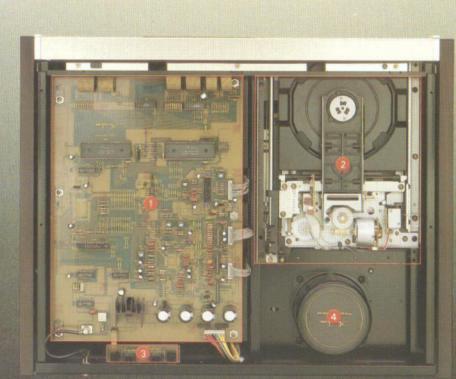
Servo circuits, signal processing circuits, nechanism control circuits, master clock generator, etc. ICs are also mounted on the other side.
(2) Cd mechanism assembly The entire mechanism is mounted on an alumii diecast frame to prevent resonances, and floating suspension from chasis suppresses vibrations.
ransmitter for optical fiber transmission Power transformer
Massive, heavy chassis subdues resonances
The weight of the DP-80L is a full 15 kg, which is extremely heavy for a CD player unit. A large part of this weight is due to the extensive measures against resonances and vibrations. The rotation section is supported by a strong metal frame, and the strong chassis itself also is designed to withstand all sorts of vibrations. Operation is highly stable and air-borne sound pressure from the speakers or characteristics of the installation location cannot influence the sound.

Like all Accuphase components, the DP-80L presents an external appearance of striking simplicity. The uncluttered front panel is a welcome change from ordinary CD players. Only four control buttons are visible: PLAY. TRACK, SEARCH (BACK/NEXT), and PAUSE. Operating the DP-80L evokes the feel of a high rates analog record player. But other functions are not absent. The controls for a sensible array of functions are located behind a hinger sub panel door in the lower section of the front panel. The supplied remote commander RC-2 also lets the user control all functions of the player from the listening position.
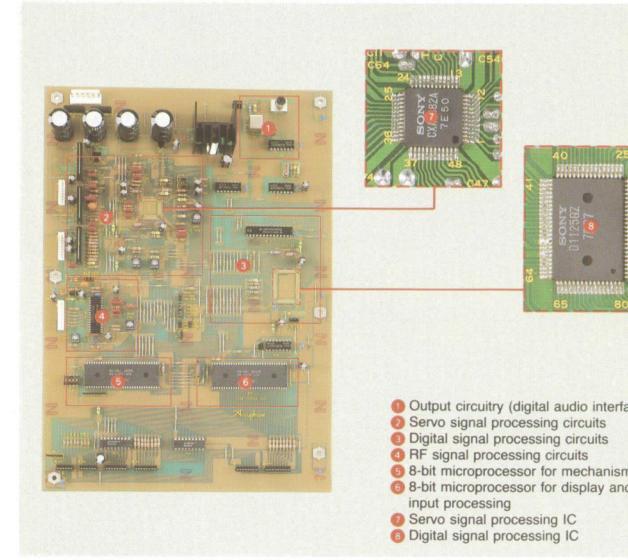
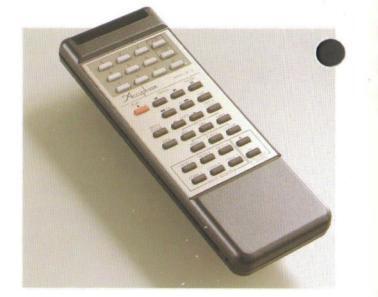
Simple and beautiful Accuphase design
and the visual appeal of the unit is further enhanced by the side panels made of exquisite persimmons wood. The DP-80L perfectly matches other Accuphase components and blends harmoniously with the listening room.
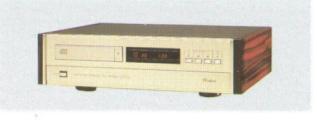

Ultra precise 20-bit discrete D/A converter
20-bit 8-times oversampling Compatible with 3 sampling frequencies
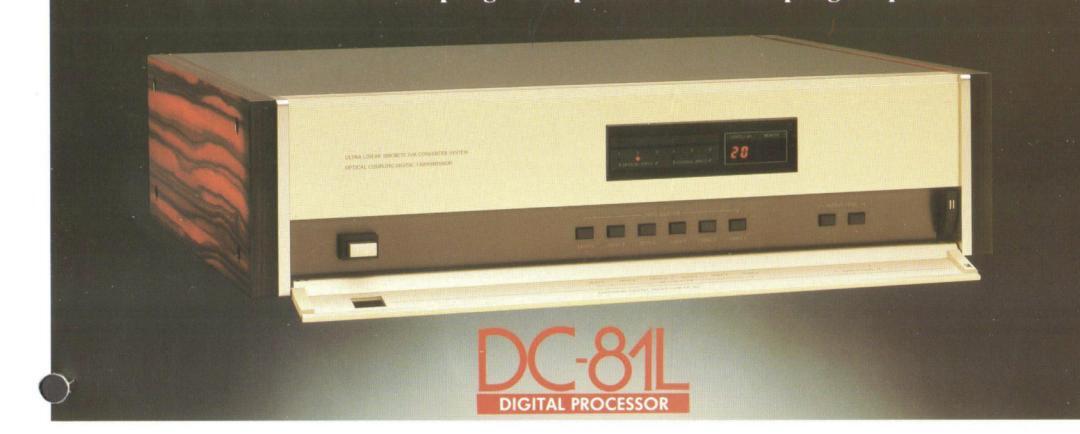
20-bit discrete D/A converter approaches the theoretical limits o performance
The D/A converter is an essential component in the Compact Disc reproduction chain, as it transforms the digital information back into an analog audio signal. Similar to the circuit elements which determine linearity in a mamplifer, the performance of the D/A converter has an anonome bearing on the sound quality of a CD olaver.
The DC-81L represents a breakthrough in D/A converter technology. For the first time in a consumer audio product, it incorporates a 20-bit converter built with discrete circuit components. But the innovation does not stop there. Instead of merely adding bits above or below the regular 16 bits of the CD format, the precision of each bit itself is improved by a factor of 1/220 = 9.54 x 107. Expressed in simple terms, digital-toladog conversion with the DC-81L is as much as 16 times more precise than with a conventional 16-bit converter. Distortion components at 1 kHz amount to a mere 0.0005%, which represents the theoretical limit of CD player performance. Quantization noise, another obstacle to truly outstanding CD reproduction, is also reduced to absolutely negligible levels.
The converter of the DC-81L uses the current summing principle, which provides superior linearity. The entire 20-bit converter circuitry is built using carefully selected discrete components, a feat that is not matched by any other manufacturer. The right section of Fig. 3 shows, the operation principle of the converter, which consists of an array of current switching elements and ultra-high precision resistors. Each unit is individually adjusted for optimum performance, to virtually eliminate distortion at low signal levels (commonly called zero-cross distortion).
2 Separate 20-bit 8-times oversampling digital filters for each channel
The digital intermultiplies the sampling frequency by a factor of eight, thereby moving the spurious noise components far outside the audible range. The subsequent analog filter consequently can have a gentle cutoff slope, which is highly desirable to prevent sound quality degradation due to phase errors. Simply increasing
e conversion rate is not enough, however. areful matching to the analog stage and prrect filter design are also of great impor-
The digital filter of the DC-81L uses highly sophisticated processing algorithms to achieve a truly impressive attenuation of -110 dB between 24.1 and 328.7 kHz. Ripple components in the passband, which can also audibly degrade the signal, have been reduced to an astonishing ±0.00005%. This represents the absolute state-of-the-art in digital filter performance.
GIC 3-pole Butterworth type active filter with hand-selected components
As the digital filter uses 8-times oversampling, the conversion rate of the D/A converter becomes 352.8 kHz. The output signal of the converter therefore contains unwanted high-frequency components only at 352.8 – 20 = 332.8 kHz, as well as at higher frequencies (multiples of 16, 24, etc.). To reliably remove these, a thirdorder analog low-pass filter with gentle roll-off characteristics (18 dB/oct.) is perfectly sufficient. This is an important advantage, as such a
t DC-51L Block Diagram
filter introduces no unwanted phase errors effects in the audible range. The GIC (Generalized Impedance Converter) 3-pole Butterworth type active filter in the DC-81L is built with supreme-quality selected components, to assure utterly pure sound quality.
4 21 optoisolators in each channel ensure perfect electrical isolation of digital filter and D/A converter
High-frequency noise from the digital section can have a disastrous effect on sound quality it permitted to enter the audio circuits. The D6-81L reliably prevents this by electrically separating the D/A converter from the preceding sections and transmitting the signal by optical means. The left section of Fig. 3 shows the operation principle. The data for each bit pass through a dedicated high-speed optoisolator (transmission rate 7 MBit/second). This ensures electrical isolation and blocks any noise components. The output signal of the optoisolators passes through the mother PCB outside the shielded frame to the converter in the magnetically and electrically shielded analog circuit block.
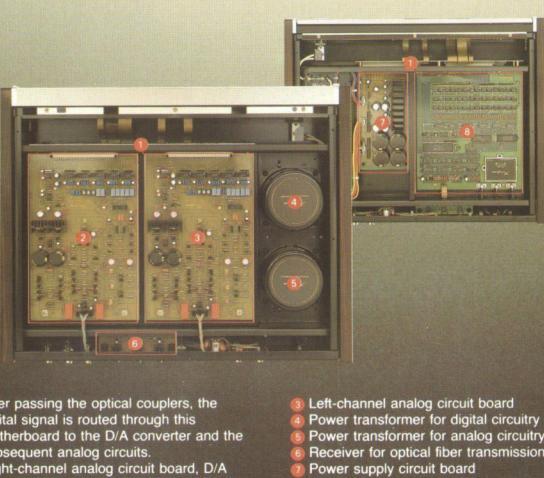
Three sampling frequencies and six inputs (3 optical, 3 coaxial) provide unsurpassed versatility
DAT recorders will appear to have a digital output in the near future. To accommodate such needs, the DC-81L automatically detects the sampling frequency of the input signal (48, 44.1, or 32 kH2) and adjusts itsel accordingly. Additional flexibility is provided by the wide choice of inputs, which includes three optical terminals and three connectors for coaxial cable.

The noise shaper is an ingenious circuit which uses feedback of tolerance errors in the digita filter to decrease noise in the audible range Together with the 20-bit conversion principle this results in utter freedom from noise. Music reproduction becomes almost uncannily real, as even the most delicate musical nuances are faithfully preserved.
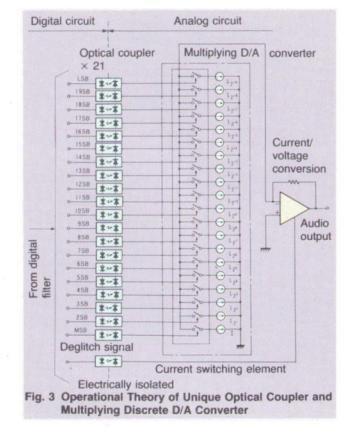
teceiver for optical liber transmission ower supply circuit board bigital signal processing circuit board Deemphasis with top-notch
phase aberrations under 1.5 degrees bome CDs are recorded with preemphasis, that is the high frequencies are boosted during rebording and must be attenuated by the same mount in playback. This technique, which imroves the overall signal-to-noise ratio of the eproduction chain, is mostly used in digital tape ecording, but it can still be found in a number of DDs as well. Such CDs also include a special ignal that is detected by the player, causing it to utomatically engage the deemphasis circuit. An RC (resistor-capacitor) network is commonly used to provide the required attenuation. But the DC-81L takes a different approach. It provides teemphasis while the signal is still in digital orm, thereby achieving outstanding precision. Deemphasis aberrations are a mere ±0.001 dB and phase errors less than 1.5 degrees. This lets my CD sound its very best.
Direct-coupled output stage with 0 dB gain buffer e final audio stage of a CD player also has
nsiderable influence on sound quality
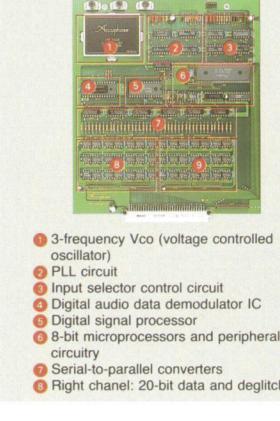
Accuphase engineers have achieved impres sive results in this area as well. By designing the J/A converter for an output level which requires to further amplification, a no-gain buffer am plifier of desirably simple construction can be used. The circuit uses discrete components in a push-pull DC servo configuration, for ultimate S vatio, and stable low. distortion performance
Digital level control adjustable by remote commander. Two unbalanced and one balanced outputs.
A conventional CD player, while usually permitting track selection with the remote control, still makes you reach for the amplifier's volume knob if you want to change the listening volume. Not so in the case of Accuphase.
The DC-81L has ultra-precise digital level controls which fully bring out the advantages of the 20-bit principle. Sound quality remains totally natural and pure, even at very low listening levels. The output level can be conveniently adjusted with the premote commander supplied with the DP-80L
For the output, two pairs of RCA type phono jacks are provided to meet conventional requirements, and a set of balanced XLR connectorpermits balanced connections. Accuphase promoting balanced cable connections between the amplifier components of the reproduction chain, for noise-free, high-quality signal tracemission.
10 Thoroughly interference-proof design
By using highly sophisticated techniques such as optical fiber connections between the player and processor unit and optiosolators to separate the digital and analog circuit sections shinghfrequency noise transmitted via cablea can be reliably blocked. But it is equally important to deal with the problem of air-borne spurgus radiation or noise transmitted via the Ac power line. The DP-80L and DC-81L provide perfect solutions in this regard also, by employing separate thorough shielding for the digital and analog blocks and by using totally separate power transformers.
n the analog section, separate circuit boards and separate transformer windings are used for the left and right channels, to prevent interchannel interference.
Spurious radiation from the digital circuitry must also be prevented from reaching other audio components. Accuphase has gained extensive experience in this area through the development of its high-quality tuners. This experience is in evidence in the perfect internal shielding of the
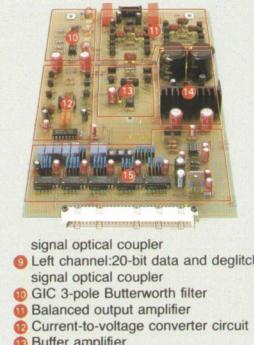
Buffer amplifier Power supply regulator circui Ultra high precion 20-bit disc

A major advantage of digital audio is the possibility to fully recreate in the home the vibrant quality of the original musical performancewhether recorded at the studio or in the concert hall. The Accuphase separate type CD player DP-80L/DC-81L is the ultimate instrument to turn this
CD PLAYER DEVELOPMEN PRINCIPLES
Basic performance comes first
In the world of analog equipment, it is possible to give a component a certain sonic character which can enhance its aural impression. Digital components, on the other hand, have to transmit the entire musical information in encoded form. If even a small piece of this information is lacking, the result will sound distorted. When developing digital equipment, it is therefore important to the ensure that all the information is transmitted one hundred percent. Only after exploring the limits of physical performance can the designer attempt further measures to influence sound quality. Trying to cover up incomplete basic performance with cosmetic circuitry "enhancements" will not yield results which satisfy critical ears.
Overall balance is vita
Various techniques to improve CD performance, such as oversampling digital filters, D/A converters with higher resolution, etc. have been developed. All of these certainly have the potential to enhance the sound of a CD player, but it does not suffice to make improvements merely in one or two limited areas. For such measures to be truly effective, they must be part of an integrated approach. Especially at the high general level of performance that has been achieved by modern audio equipment, further improvements can only be realized through a harmonious, carefully balanced reevaluation of the system as a whole.
RF technology - an essential aspect
The signals handled by digital components have extremely wide bandwidth extending into the VHF range, i.e. the frequency of television broadcast signals. Many lesser components have problems when it comes to correctly dealing with this aspect. If spurious RF noise components are allowed to enter the audio circuits, the result is interference leading to a distinct degradation of sound quality. The disastrous effect RF emission can have on sound reproduction is clearly evident when an insufliciently shielded computer is placed close to a piece of audio equipment.
It is therefore of utmost importance to prevent digital signal interference and spurious noise emission. In order to effectively achieve this aim, a solid background not only in building audio equipment but also in RF technology is highly desirable. This will make it possible to create a truly state-of-the-art CD player.
ideal into reality. Leaving the area of merely adequate performance far behind, this ultimate Compact Disc reproduction system pushes back the theoretical limits of music reproduction. It is a work of supreme quality in the true Accuphase spirit.
Based on the above principles, Accuphase has thoroughly reevaluated every aspect of CD play er performance. The result is a new pinnacle in the art of music reproduction.
D PLAYER DP-80L
Fig. 1 shows the block diagram of the CD Player DP-80L. This unit is designed to read the encoded information from the disc, convert it into an electrical signal using an EFM decoder and to restore the signal to its correct order with the error correction circuitry. The output signal supplied by the DP-80L is still in digital form. It must therefore be used together with a separate D/A converter unit such as the Digital Processor DC-81L. Three output terminals are provided: two optical outputs conforming to the EIAJ standard proposed by Accuphase and one coaxial output. By using the optical output and the supplied optical fiber cable, transmission losses are reduced to an absolute minimum, thus laithfully preserving even the most delicate musical nuances.
The drive assembly uses a newly developed mechanism which can accommodate 3-inch CDs. The drive is mounted on an aluminum diecast frame for absolutely stable operation. The extremely heavy and sturdy construction shuts out internal as well as external resonances to maintain optimum sonic purity. The enclosure provides a virtually hermetic shield, which together with the professional-quality AC line filter eliminates noise interference.
The front panel of the player is a model of functional simplicity, possessing only four buttons for Play, Pause, and Track Search. The controls for all other functions are located beneath a hinged sub panel door in the lower section. The highly pleasing, uncluttered esthetic appearance evokes the feel of a high-quality analog record player. But convenience is not sacrificed for good looks. A supplied long-range remote commander permits convenient operation of the unit from any location.
DIGITAL PROCESSOR DC-81
The block diagram of the digital processor unit DC-81L is shown in Fig. 2. A total of six inputs for digital signals are provided: three optical inputs conforming to the EIAJ standard and three inputs for 75-ohm coaxial cable. The unit also is equipped to handle three sampling frequencies, 48 kHz, 44.1 kHz, and 32 kHz. The DC-81L therefore can accommodate several CD players and can be used as a decoder also for a digital satellite broadcast tuner or DAT recorder.
It has become widely realized that the D/A converter has a decisive impact on sound quality. In the DC-81L, 20-bit conversion is used, which represents the current ultimate in D/A resolution. In true Accuphase tradition, the converter is made up of ultra-precise discrete circuit components for all bits. By carefully optimizing the vital circuits of the entire unit, zero-cross distortion is totally eliminated. This results in D/A conversion of previously unattainable precision.
The digital filter is a 20-bit type with e-infles oversampling. Its truly amazing performance is illustrated by specifications such as the attenuation of -110 dB and ripple of ±0.00005 dB. The fact that the filter and converter of the DC-81L are designed to handle a full 20 bits may seem like "overkill," as the Compact Disc format provides only for 16 bits. However, there are tangible advantages to this approach. The higher the bit rate of the filter and converter, the lower are conversion errors and noise in the output, even with a 16-bit input. In addition, the digital filter of the DC-81L also incorporates a noise shaper which reduces quantization noise to an absolute minimum.
For even higher performance, the digital filter and D/A converter block are electrically isolated from each other. A total of 42 high-speed optoisolators are used to transmit the signals between the two blocks. This total isolation between the digital and analog sections effectively prevents noise interference and sound quality degradation. Of course, the power supplies are also kept completely separate, using dedicated power transformers.
The analog filter is a GIC 3-pole Butterworth type active filter built with components specially selected on the basis of their sonic performance. The final output stage consists only of a direct-coupled discrete buffer amplifier with zero gain, for pure and straight signal transmission.
In addition to conventional unbalanced outputs, the DC-81L also provides a set of balanced XLR connectors. This ensures that the quality of the CD music signal is not impaired when sent to the amplifier. The digital output level control uses the full 20-bit potential for highly precise operation in 1-dB steps.
The use of highly sophisticated technology cou pled with the typical Accuphase attention to detail has resulted in a CD player system that is second to none.
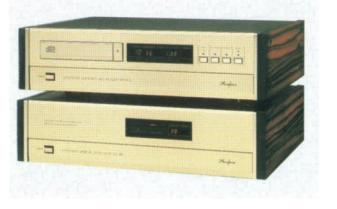
DP-80L. A professional-quality line filter is us to block any interference through the AC pow
Simple and beautiful Accuphase
e front panel presents an uncluttered appearice, as the controls are located behind a hingd sub panel door. The brushed gold aluminum
inish and the side panels made of exquisite persimmons wood further enhance the visual appeal of the unit. The DC-81L perfectly matchso other Accuphase components and blends narmoniously with the listening room.
About Digital Filters
The digital processor DC-81L employs a digital filter with 8-times oversampling. A digital filter is a circuit which carries out the filtering process while the signal is still in digital form. Unlike analog filters, the operation principles of digital filters are quite complex. The following is a brief judine of the concept of digital filtering.
The D/A converter output contains a large amount of high-frequency noise components which must be removed by a low-pass filter Fig. 1 shows the circuit configuration of a conventional CD player from the D/A converter to the
Fig. 1 shows the circuit configuration of a conventional CD player from the D/A converter to the output. As the input signal to the converter is asmpled at 44.1 kHz, the original waveform (a) becomes superimposed with the 44.1 kHz square wave signal, resulting in the staircase waveform (b). The output of the D/A converter contains the spectrum shown in Fig. 2 (a). In addition to the audio signal extending up to 20 kHz, there are high-frequency noise component at multiples of the sampling frequency (44.1 ± 20.4 kHz, 88.2 ± 20.4 kHz, 18.2 ± 20.4 kHz, at the signal are outside the audible range, their removal is very important, as they can cause the following problems:
(1) Intermodulation distortion in the nonlinear, ultra-high frequency range of audio circuits in the processor unit, preamplifier, or power amplifier. Such modulation generates distortion products which spread into the audible range and can degrade sound quality.
causing the same problems. ) Output stage overload in wide-band amplifiers (such as all transistor amplifiers) due
constant high-frequency current.4) Overheating and damage of loudspeaker voice coils (especially tweeters) due to excessive
nigh-frequency energy. or the above reasons, every CD player requires a filter to cut off high-frequency noise
I an apple Black with shore and M to define the original orginal
A low-pass filter, as its name implies, is designed to let signals below a certain frequency pass and cut off higher frequencies. A desirable characteristic for CD players is flat response (no atteruation) up to 20 kHz, and sharp atteruation above that, reaching at least –80 dB (referably –90 dB) at 24 kHz. Low-pass filters are also used in other audio components such
as preamplifiers, but the steepest slopes are usually -18 dB/oct. Fig. 2 (b) shows the characteristics of a -18 dB/oct. filter. At 40 kHz, attenuation is -18 dB, a 80 kHz, it is -36 dB, and at 160 kHz, it reaches -54 dB. For a CD player, this of course will do. In order to achieve the required characteristics shown in Fig. 2 (c), several filters can be employed in tandem (multi pole filters), but it is a very difficult feat to ensure flat response to 2 kHz while incrudent player.
In conventional CD players, 11-order filters were often employed, but such designs invariably introduce phase distortion and cause undulations (ripple) in the frequency response. Another disadvantage of such analog filters is the large number of circuit components required, which an additional cause for nonlinear distortion.
If it were possible to use filters with a more gradual roll-off, these problems could be eline The digital filter approach provides the ideal solution which does exactly that.
Digital filter increases sampling frequency to multiples of 44.1 kHz, permitting gentle analog filter characteristics Fig. 2 (d) shows the frequency spectrum when the sampling frequency is multiplied by 8 time:
Fig.2 (0) slows mergenecy spectral which have to be removed are now far outside the auditioned up 9 times to 352 8 Hz. As the components which have to be removed are now far outside the audition range, the low-pass filter can have a gentle cutoff slope, which is highly desirable in view of phase and ripple characteristics. The purpose of the digital filter is to perform the arithmetic operations required to multiply the sampling frequency. The configuration of a CD player with digital filter is shown in Fig.3. The D/A converter is preceded by the digital filter and followed the analog low-pass filter.

Performance Guaranty
All Accuphase product specifications are guaranteed as
CD Player DP-80L
• Type: Digital player for compact disc system
- Standard CD format
- Data read
- Laser:
- emiconductor laser: GaA1As (double heterodyne diode)
- Semiconductor complementation
- Power requirements
- Voltage selection by for 100V, 117V, 220V and 240V, 50/60
Dimensions:
| DP-80L/DC81L | EdB) | FREQUENC | SE | ShibaSoku 7258 | ||
|---|---|---|---|---|---|---|
| , 1 | ||||||
| 1 | ||||||
| 3 | ||||||
| 2 | ||||||
| 8 | ||||||
| OUTPUT LEVEL (INHE) | -1 | 110 | ||||
| 8.57 [V] | -2 | |||||
| SOURCE : EIAJ CD-1 | -3 | |||||
| - | ||||||
| -5 | 10 | 120 | 15 | 185 | 186 | |
Frequency Characteristic
| DF-OULDCOTE | |||||||
|---|---|---|---|---|---|---|---|
| 8 | |||||||
| 38 | |||||||
| Nº . | 48 | ||||||
| LO TOL - | 58 | ||||||
| (2 | |||||||
| Ne N | |||||||
| 6 1. | 88 | BIIII I | |||||
| 58 | |||||||
| in art ins sheet -1 | 88 | ||||||
| 18 | |||||||
| 18 | 122 | 11 | 185 | 1225 | |||
Channel Separation Characteristic
- Weight
- Supplied Remote Commander RC-2
GUARANTY SPECIFICATIONS
Digital Processor DC-81L
- Type: Digital processor unit
- Format: Standard EIA format
- Sampling frequencies:
- Frequency response: 4.0 20,000 Hz ±0.3 dB
- Frequency response: 4.0 20,000 D/A converter: Discrete 20-bit type
- Digital filter:
- 20-bit 8-times oversampling filter
- Total harmonic distortion + noise:
| (3) | Shib | sSoku 7258 | |||
|---|---|---|---|---|---|
| 8.1 | |||||
| 8.81 | |||||
| 181k0Hm]+(868(pf) | 8.881 | ||||
|
SOURCE :
JAS YDDS-1 |
|||||
|
e.eaa1
18 |
188 | 11111 | 184 | 188- |
| DP-80L/DC81L | SPECTRUM ANALYSIS |
|---|---|
| (dB) HP18454 | |
| -28 | |
| -18 | |
| BRND WIDTH | |
| 38 (Hz) | -53- |
| SHEEP STOP | -78 |
| . 82 (xHz) | -12 |
| INDUT POWER | |
| -58 (484) | |
| INPUT, IMPEDANCE | -118 |
| 1H (OHH) | -128 |
| SHOOTHING | 138 N. MILL BULL, WALLS, MARA LAT AND, AN ADMINI M |
| ON | 8 |
| [kHz |
Spectram Analysis of Reproducing Signal at 1 kHz: -60 dB
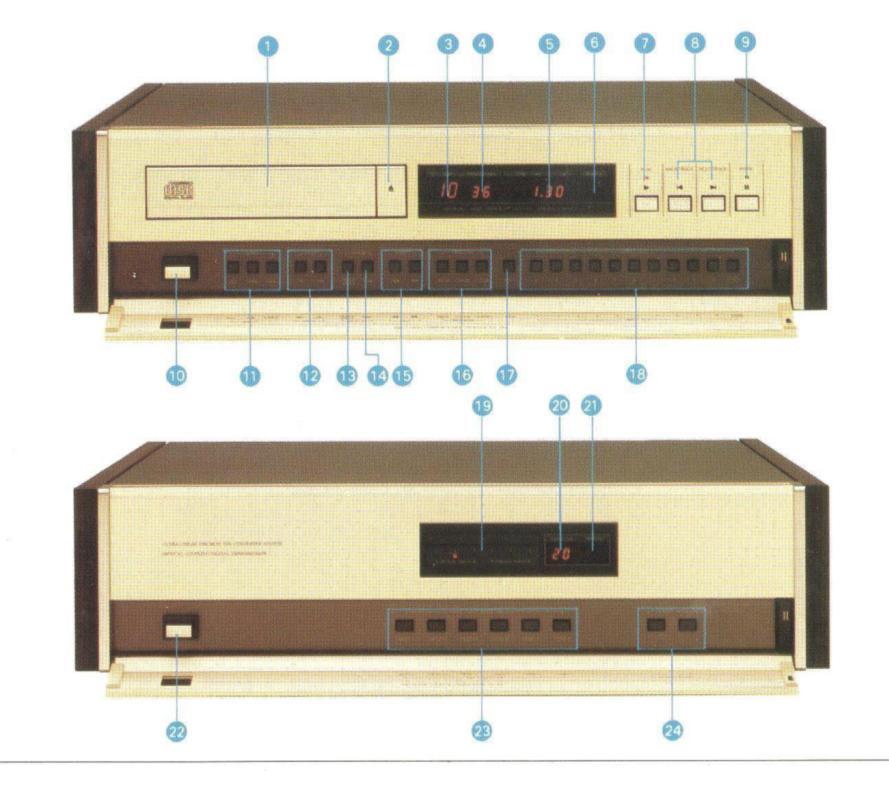
- Dynamic range: 98 dB Channel separation: 112 dB
- Rated output level and impedance
- BALANCED: 2.5V/50 ohms (25/25 ohms), balanced XLR
- Output level control:
- Digital signal output format and level (EIA)
- Semiconductor complement
- Voltage selection by for 100V, 117V, 220V and 240V, 50/60
- Dimensions:
- 475 mm (18-23/32 inches) width, 135 mm (5-5/16 inches) (including legs) height, 373 mm (14-11/16 inches) depth Weight
- 15.9 kg (35.1 lb) net, 20.9 kg (46.3 lb) in shipping carton
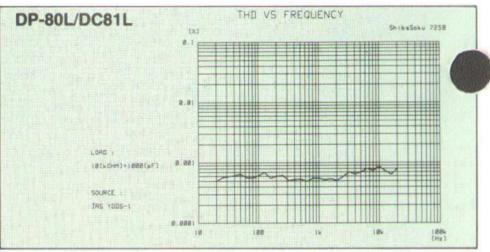
• THD vs. Frequency Characteristic
| DP-80L/DC81L | (dBV) | SPE | CTRUM | ANA | LYSIS | HP324 | 58 | |
|---|---|---|---|---|---|---|---|---|
| -1.1 | FAR C | |||||||
| 100 L. (1) | 100 | 10.1 | ||||||
| -20 | die. | 201 | ||||||
| -28 | 10 | |||||||
|
HTDIM OMPE
SEE |
-50 | |||||||
| SHEEP STEP | -18 | |||||||
|
DOWNRY TUMNIE
-28 [VBb] |
-98 | |||||||
| INPUT IMPEDANCE | -100 | C | ||||||
| SHOOTHING | -128 |
Spectram Analysis of Non-signal Reproduced Noise vs. Frequency Characte
(352.8 kHz sampling frequency is attenuated to about 105 dBV.)
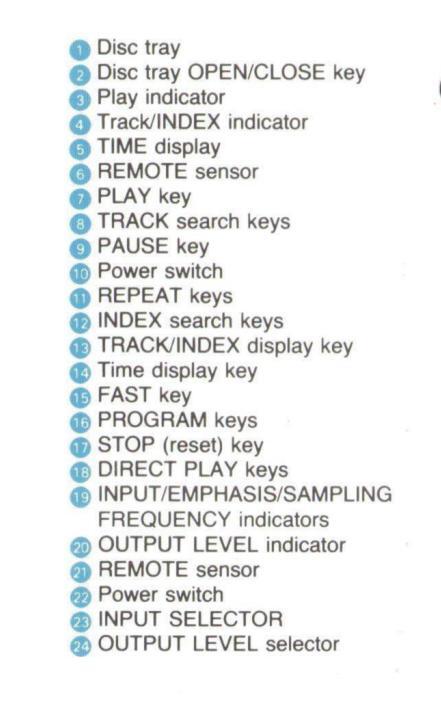

851-0082-00(G3) PRINTED IN JAPAN





